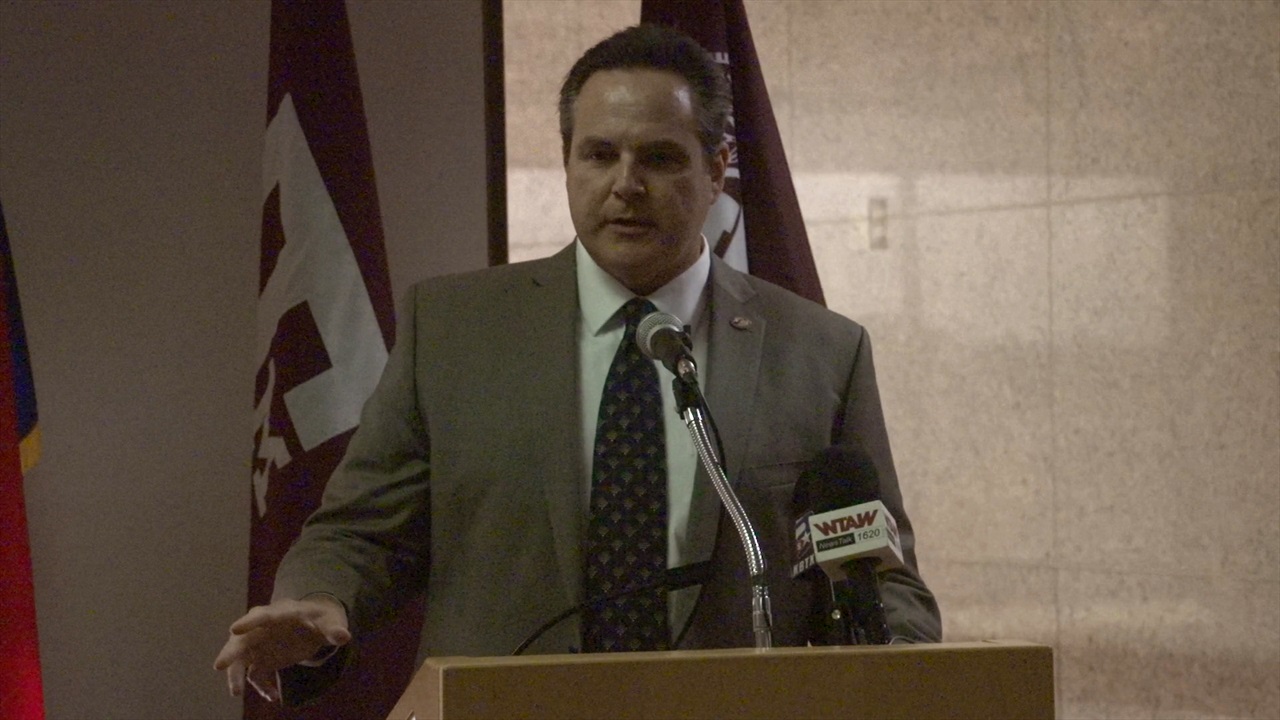
Texas A&M Football
A&M System to donate $1 million to College Station traffic fixes
The City of College Station and Texas A&M Transportation Institute (TTI) on Friday announced a partnership to tackle the problem of burgeoning traffic in the rapidly growing Bryan-College Station area.
The Texas A&M University System will donate $1 million to the City to help upgrade traffic signals, control mechanisms and monitoring technologies, thereby making traffic flow more manageable and responses to traffic disturbances more efficient.
“It’s rare that somebody approaches the City and says, ‘Hey, you got a use for a million dollars?’ So the person I have to thank first is Chancellor Sharp,” College Station City Manager Kelly Templin said. “He was very quick to offer these funds. We have been working very closely with the Texas A&M Transportation Institute on the implementation of a game day program … that has been refined to get traffic to and from the stadium.”
Yet, Templin and TTI officials are adamant the changes will bring significant positive impact to College Station’s traffic issue year-round — not merely on game days.
Included in the plans are new signal controllers (already installed), new communication equipment between TTI and the City, closed-circuit cameras for the City’s traffic monitoring systems that will sync with TTI’s and roadway sensors to monitor traffic flow and density.
“So now we’ve got a system that can find problems faster, react to them faster and have a better plan to tell everyone about it. I liken it to a great linebacker — we can see it and react to it more quickly.”
Traffic in College Station on game days and otherwise has become a central issue with the once-tiny college town’s growth into a city of more than 100,000, the steady increase in Texas A&M's student population, the rise to prominence of the Aggie football program and the expansion of Kyle Field.
“We’re not a small town anymore,” TTI Director Dennis Christiansen said. “We’ve become a city, and on occasion we experience the traffic that comes with that. The traffic on game day makes College station the fourth-largest downtown in the state of Texas, and they all want to leave at the same time. We’ve made huge progress in making it happen.
“The equipment going in as part of this upgrade is a huge step in being able to [time traffic signals] well, and do it efficiently.”
The new communication equipment between the transportation management center and the city is expected to be in place by summer’s end. Lomax indicated that they expect to be able to control signals from the City, the East Kyle Command Center and the Transportation Services offices by the fall.
Also, the ability to turn Wellborn Road southbound across four lanes when directing traffic after a game would be aided by overhead signage, installation of which is anticipated to begin after football season and be completed next year.
“In terms of benefit, I think we’re talking about, in a 10-minute trip, getting home a minute or two faster,” Lomax said. “The real benefit is going to be more predictable travel times and less frustration.
“I don’t know of any town this size that has a traffic management center like what they’re (the City of College Station) going to have.”
The Texas A&M University System will donate $1 million to the City to help upgrade traffic signals, control mechanisms and monitoring technologies, thereby making traffic flow more manageable and responses to traffic disturbances more efficient.
“It’s rare that somebody approaches the City and says, ‘Hey, you got a use for a million dollars?’ So the person I have to thank first is Chancellor Sharp,” College Station City Manager Kelly Templin said. “He was very quick to offer these funds. We have been working very closely with the Texas A&M Transportation Institute on the implementation of a game day program … that has been refined to get traffic to and from the stadium.”
Yet, Templin and TTI officials are adamant the changes will bring significant positive impact to College Station’s traffic issue year-round — not merely on game days.
Included in the plans are new signal controllers (already installed), new communication equipment between TTI and the City, closed-circuit cameras for the City’s traffic monitoring systems that will sync with TTI’s and roadway sensors to monitor traffic flow and density.
So now we’ve got a system that can find problems faster, react to them faster and have a better plan to tell everyone about it. I liken it to a great linebacker — we can see it and react to it more quickly.
{"Module":"quote","Alignment":"left","Quote":"So now we’ve got a system that can find problems faster, react to them faster and have a better plan to tell everyone about it. I liken it to a great linebacker — we can see it and react to it more quickly.","Author":"Tim Lomax"}
“Now we can go in and, if there’s a problem, they can change the signals and have a different kind of plan in half an hour or less,” TTI’s Tim Lomax said. “We can react much faster to problems. We can also find those problems much faster because of the closed-circuit cameras they’re putting out. That all will sync up with what A&M Transportation Services has in their monitoring system. So now those two agencies can talk to each other. “So now we’ve got a system that can find problems faster, react to them faster and have a better plan to tell everyone about it. I liken it to a great linebacker — we can see it and react to it more quickly.”
Traffic in College Station on game days and otherwise has become a central issue with the once-tiny college town’s growth into a city of more than 100,000, the steady increase in Texas A&M's student population, the rise to prominence of the Aggie football program and the expansion of Kyle Field.
“We’re not a small town anymore,” TTI Director Dennis Christiansen said. “We’ve become a city, and on occasion we experience the traffic that comes with that. The traffic on game day makes College station the fourth-largest downtown in the state of Texas, and they all want to leave at the same time. We’ve made huge progress in making it happen.
“The equipment going in as part of this upgrade is a huge step in being able to [time traffic signals] well, and do it efficiently.”
The new communication equipment between the transportation management center and the city is expected to be in place by summer’s end. Lomax indicated that they expect to be able to control signals from the City, the East Kyle Command Center and the Transportation Services offices by the fall.
Also, the ability to turn Wellborn Road southbound across four lanes when directing traffic after a game would be aided by overhead signage, installation of which is anticipated to begin after football season and be completed next year.
“In terms of benefit, I think we’re talking about, in a 10-minute trip, getting home a minute or two faster,” Lomax said. “The real benefit is going to be more predictable travel times and less frustration.
“I don’t know of any town this size that has a traffic management center like what they’re (the City of College Station) going to have.”
Never miss the latest news from TexAgs!
Join our free email list



